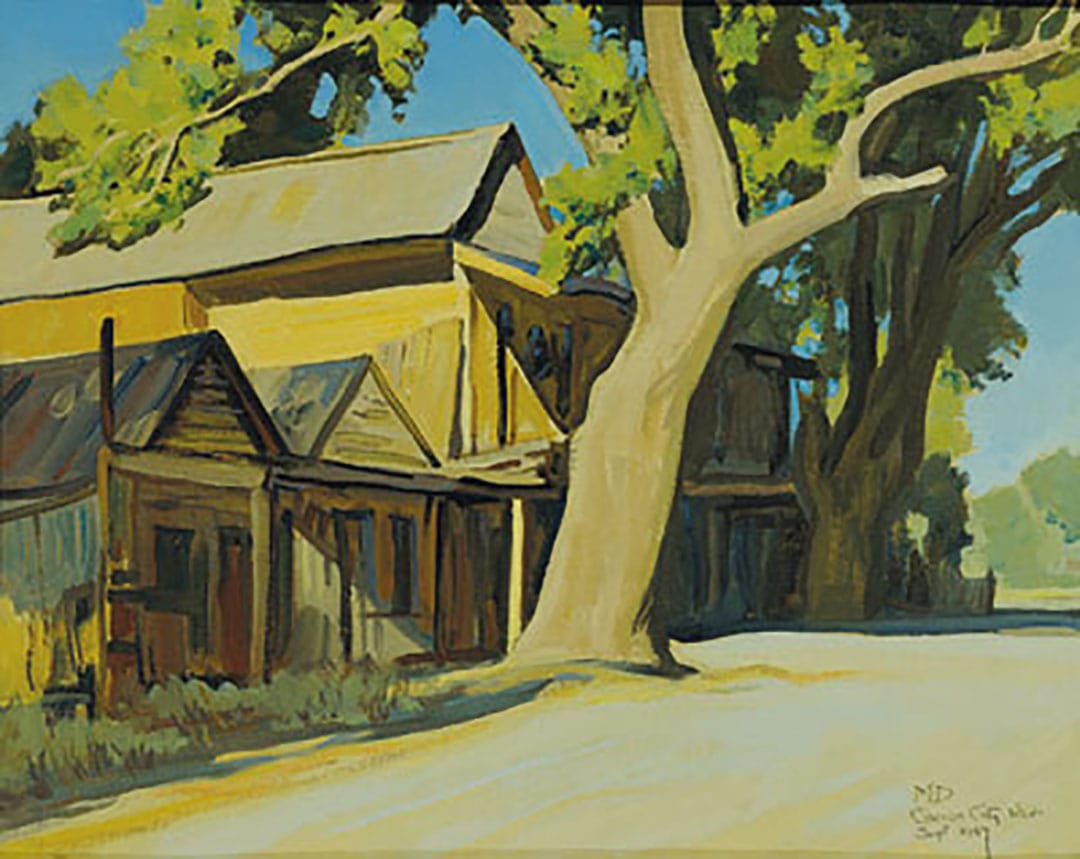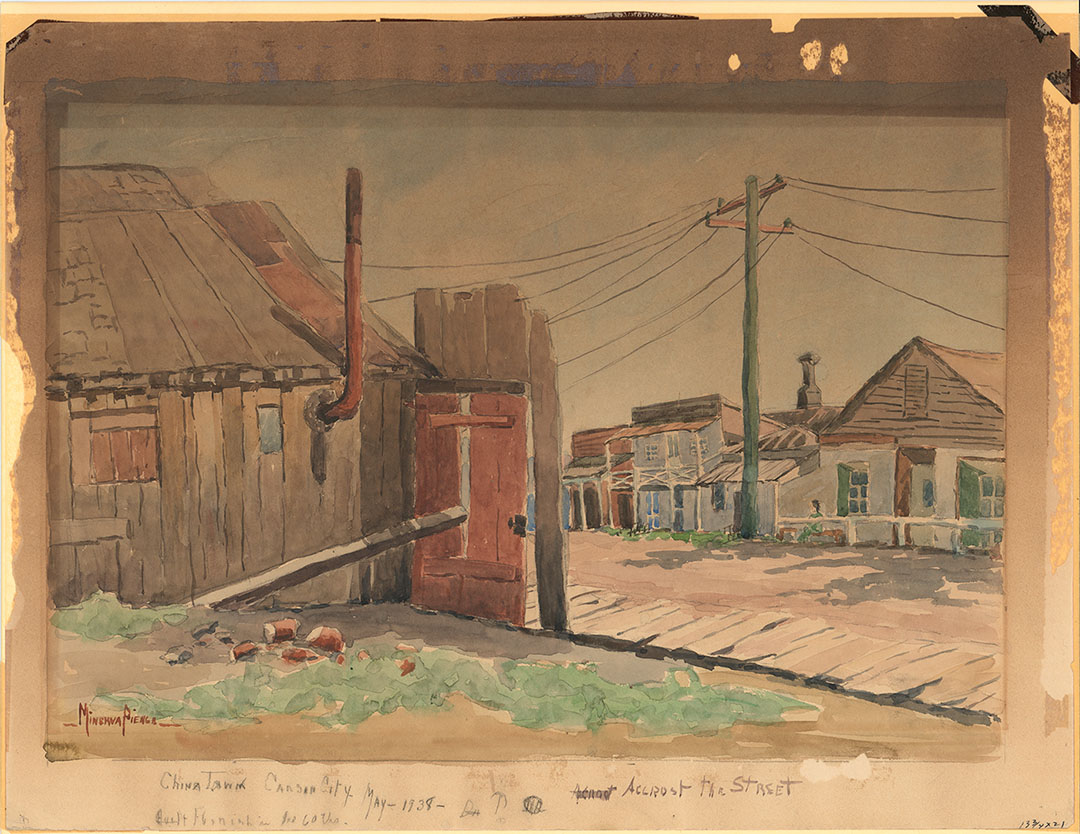Restaurateur Yee Bong was key part of Carson City’s Chinatown.
Sometimes an image or a photograph captures my imagination and leads me on the trail of an interesting story. The almost-century-old photo of Yee Bong in front of his café in Carson City took me on such a journey. He jauntily stands there, hand on hip, flat cap on his head, with suspenders and rolled-up sleeves. It’s 1935 and he’s in front of a two-story wooden building that has seen better days. Under the name of the restaurant, Yee Bong Café, is written “chop suey noodles.”
Located east of the Capitol Complex, Carson City’s Chinatown was well established with the greatest number of Chinese residents of any county in Nevada. At its peak in 1880, the Chinese population numbered about 800, and Chinatown stretched for five blocks. The area contained hotels, restaurants, gaming houses, laundries, houses of prostitution, and even some temples in which traditional Confucian, Buddhist, and Taoist rites were performed. But by the time the aforementioned photo was taken, Carson’s Chinatown was practically a ghost town, and Yee Bong’s eatery was probably its last remaining hotspot.

Yee claimed to be born in 1861 in Virginia City during its bonanza days. Historian Sue Fawn Chung hypothesizes that, similar to other young Chinese in the 1860s to 1870s, he was enticed by the Central Pacific Railroad, and Yee’s first work probably was carrying tea to Chinese workers. He may have developed skills as an assistant cook, helping feed the 10,000 to 20,000 men working the railroad. Mine owners, railroad station managers, and lumber camp managers liked to hire Chinese cooks because the workmen would stay longer in the job if the food was good. Once the transcontinental line was completed in 1869, some cooks opened their own restaurants. This appears to have been Yee’s path.
Cultural Crossroads
In 1873, Yee opened his café. It became a popular place for the predominately male population of Carson City. It was located in the heart of Chinatown at Third and Valley streets. Chung suggests that food selection and pricing would have been similar to food found on the Virginia and Truckee Railroad, costing about 25 cents for a complete meal. Yee probably also catered to those staying at the two boarding houses owned by his clansmen, Yee Nong Chong, also known as Sam Gibson, and Ah Chung, the manager of the prosperous Quong Hing Co., which provided supplies to lumbermen and miners.
No menus remain (if they existed at all), but Chung concludes that Yee offered Chinese and American food to his customers. Some Chinese-owned restaurants at this time only served American food, with steak and apple pie as the centerpieces, but the verbiage “chop suey noodles” over the restaurant’s door indicates that at least some Chinese dishes were served.
Demise of Yee and Chinatown
In 1938, Yee was 78 years old and one of the few Chinese remaining from the Comstock era and one of nine left in Carson City. Yee died in 1941, a victim of a pedestrian accident. Apparently he had no surviving relatives. Trent Dolan wrote a tribute in the Nevada Appeal saying, “Carson City history wouldn’t be complete without Yee Bong … one of western Nevada’s best-known ‘Celestials.’” Dolan went on to describe Yee as a “real Nevadan.”

Yee Bong’s restaurant was razed shortly after his death, and Chinatown shrank until only a few residents remained. The buildings were vandalized and demolished over time, and in the 1950s, the land was bought for new State of Nevada offices. A plaque sits in the parking lot at the corner of Stewart and Third streets, a respectful reminder of Yee and the colorful history of Chinatown. Yee’s final resting place is only a mile away from his restaurant, in Carson’s Lone Mountain Cemetery.
Sharon Honig-Bear was the longtime restaurant writer for the Reno Gazette-Journal. She is a tour leader with the Historic Reno Preservation Society and a supporter of all things cultural and historic. She can be reached at Sharonbear@sbcglobal.net.


